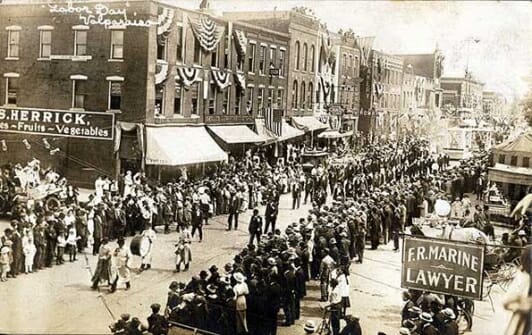Indy Explains: How Labor Day started and what U.S. workers do all day

Labor Day is celebrated by many people as the symbolic end of the summer. It was also once the start of the back-to-school season, but for most U.S. school districts that has changed to August.
How many people stop to think about the real meaning of the holiday, or know its origin, though? As always, The Indy seeks to explain and illuminate the events that pepper our lives.
The first observance of Labor Day was likely on Sept. 5, 1882, when thousands of workers assembled in New York City for a parade. In subsequent years, the parade inspired similar events across the country. By 1894 more than half the states were observing a “workingmen’s holiday” on one day or another.
Later that year, Congress passed, and President Grover Cleveland signed, a bill designating the first Monday in September as “Labor Day.” This national holiday marks the creation of the labor movement, and gives Americans a day on which to pay tribute to the social and economic achievements of the workers of America.
Who are we celebrating?
As of May 2017, the number of people age 16 and over in the nation’s labor force was 159.8 million people, according to the U.S. Bureau of Labor Statistics (BLS).
What do they all do?
BLS also tracks occupations. Here are the ones with the most workers:
| Largest Occupations, May 2016 | Number of Employees |
| Retail salespersons | 4,528,550 |
| Cashiers | 3,541,010 |
| Combined food preparation and serving workers, including fast food | 3,426,090 |
| Office clerks, general | 2,955,550 |
| Registered nurses | 2,857,180 |
| Customer service representatives | 2,707,040 |
| Laborers and freight, stock and material movers, hand | 2,587,900 |
| Waiters and waitresses | 2,564,610 |
| Secretaries and administrative assistants, except legal, medical and executive | 2,295,510 |
| General and operations managers | 2,188,870 |
Source: BLS
Fastest growing jobs
Wind turbine service technicians have the highest projected percentage growth from 2014 to 2024 (there were 4,400 of these jobs in 2014). The occupation expected to add the greatest number of positions over this period is personal care aides (458,100).
How many Americans belong to labor unions?
The number of wage and salary workers age 16 and up represented by a union in 2016 was estimated at 16.3 million. That’s a little more than 10 percent of all workers. This group includes both union members (14.6 million) and workers who report no union affiliation but whose jobs are covered by a union contract (1.7 million).
Among states, New York has the highest union membership rate (23.6 percent), and South Carolina has the lowest rate (1.6 percent). In Nevada, it’s 15 percent. BLS provides all the state rates on its website.
Wages
$51,212 and $40,742. Those are the 2015 real median earnings for male and female full-time, year-round workers, respectively. The 2015 real median household income in 2015 was $56,516, an increase in real terms of 5.2 percent from the 2014 median of $53,718.
Commute times
It takes the average worker 26.4 minutes to commute. New York (33.1 minutes) and Maryland (32.6 minutes) had the most time-consuming commutes, according to 2015 Census data. While Los Angeles is renowned for its three-hour commutes, workers in California came in 6th with an average commute of 24.9 minutes. Nevada was 28th with 24.2 minutes, and North Dakota had the shortest commute times with just 16.6 minutes.
